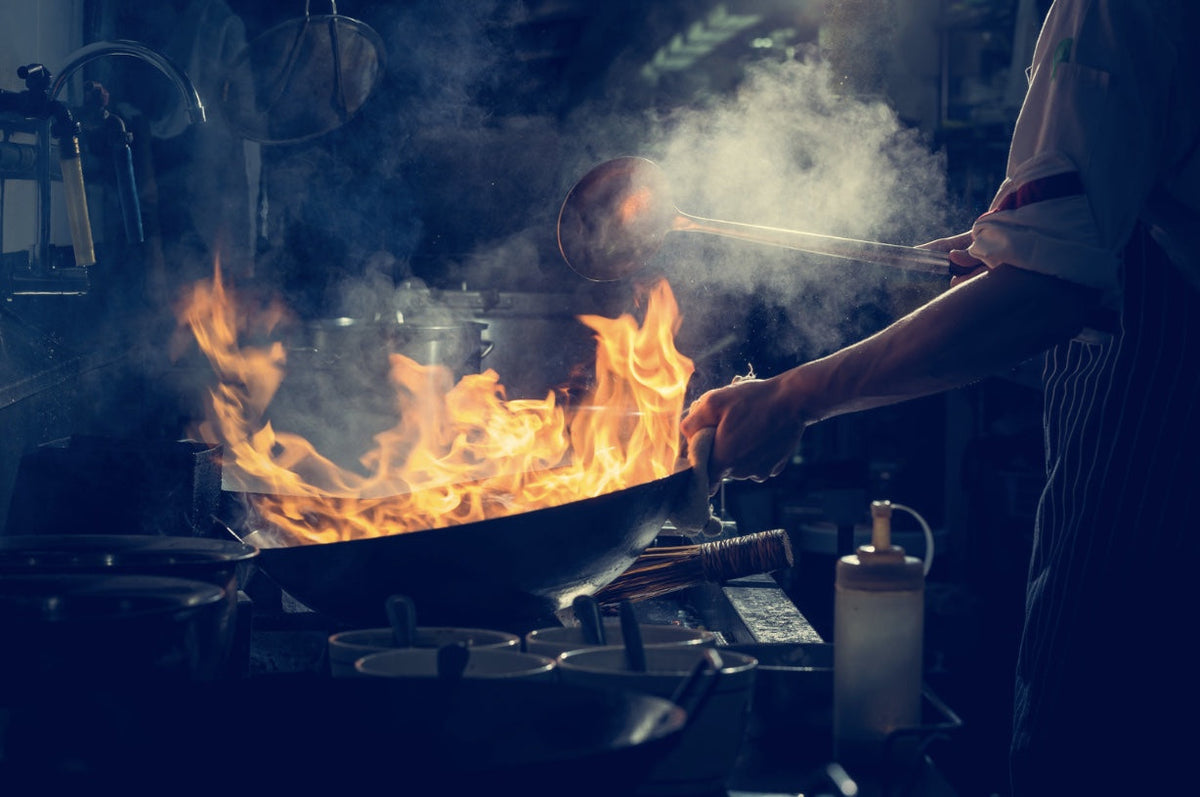
Flat Bottom Vs. Round Wok: Which Is Better?
|
Time to read 4 min
|
Time to read 4 min
A wok is a requirement in every household. They come in different types and a seasoned cook understands that there is a lot more to appreciate when choosing a utensil. When it comes to wok cooking, there is an array of styles you can explore. Whichever cooking style you wish to try, whether you want to do a deep fry, stir fry or boil some soup, you can easily do it with the right kind of wok.
If you are looking for a wok to add to your kitchen accessories, then you have to choose between flat bottom wok like a Yosukata flat bottom carbon steel and a standard round wok. This article highlights the differences between the two types of utensils and breaks down the key factors to consider when choosing a utensil for your kitchen.
Selecting a wok is not that complicated, but there are factors that you need to consider if you want it to serve you well. Here are some of the aspects you should keep in mind when picking a wok.
Before buying a wok, you need to consider the size seeing that they come in a range of sizes. Picking the right size depends on your preference, the depth of the wok, and the size of your heating stove.
It is always an ugly site when you are cooking and the food sticks on the sides of the wok. Non- stick woks are great, however, they do not go well with carbon steel. Moreover, if your cooking entails the use of high temperatures, a non-stick wok will not be your best option, they don’t work well with high temperatures.
If you are having a hard time selecting a wok, consider its versatility. Get a wok that will do much more than just stir-frying and boiling. It should be perfect for steaming, poaching, braising, stewing, smoking, and even roasting.
If you want your wok to last longer, proper care and maintenance should be considered. Considering the many types of woks in the market today, it is difficult to give a specific instruction guide to each wok. However, when cleaning your wok, you should avoid heavy scrubbing but use a soft sponge and minimal pressure to get rid of the dirt. You should also season your wok before putting it to use to remove preservative oils that protect the wok from rust during manufacturing.
There are many factors that affect the decision on the right type of cookware for your kitchen. One of these factors is the shape of the pan. Before you can decide to pick a flat bottom or a round bottom utensil for your cookery, it is prudent you understand the difference between the two.
Round bottom woks have been in use for thousands of years and are believed to have originated from China. The pan is round in shape at the bottom, which forms a wide smooth dome on the cooking area. A round-bottomed pan is famous due to its design which makes it effective when deep frying, stewing, stir-frying or baking. For a round-bottomed wok, however, you will need a ring to help the pan attain stability on the gas stove or whichever source of heat you are using when cooking.
A flat-bottomed utensil is a new invention in the market and it comes with a flat surface at the bottom. It is easy to use and it is well compatible with any heat source you wish to use. You can use it on gas, electric stoves, and more. The good thing about a flat-bottomed wok is that it is more stable compared to a round one and does not wobble when placed on the heater. The wok comes in different sizes and can therefore accommodate any food quantity.
1. Uniform heat conductivity:
One of the best qualities of a round-bottomed pan is its ability to distribute heat uniformly. This allows your food to cook evenly and a lot quicker.
2. No warping:
Despite being subjected to high temperatures, these woks are strong and can stay for long without warping.
3. Effective for stir frying and deep frying:
Unlike flat-bottomed woks, round ones are efficient for deep and stir-frying due to the high distribution of heat and capacity.
4. Ease of using a spatula:
Another convenience that comes with using a round-bottomed wok is that it allows easy use of a spatula especially when deep frying or stir-frying.
1. More wobbly:
Round-bottomed pans are less stable compared to flat-bottomed. They do not balance well on the burner without a ring and can ultimately cause some serious accidents in the kitchen.
2. Does not work well with flat-surfaced electric stoves:
Using a round-bottomed wok on a flat electric stove is a challenge. This is because of the limited heat distribution that is likely to occur hence uneven cooking.
1. Stability:
The wok has a flat bottom surface, which makes it easy to use on any type of burner. The flat surfaces allow the pan to attain stability very easily.
2. Good heat distribution:
Just like a rounded wok, a flat-bottomed one enables quick and uniform heat distribution.
3. More convenient:
Most restaurants prefer to use flat-bottomed woks because they do not come with the hustle of buying other appliances such as a wok ring in order for them to attain stability.

